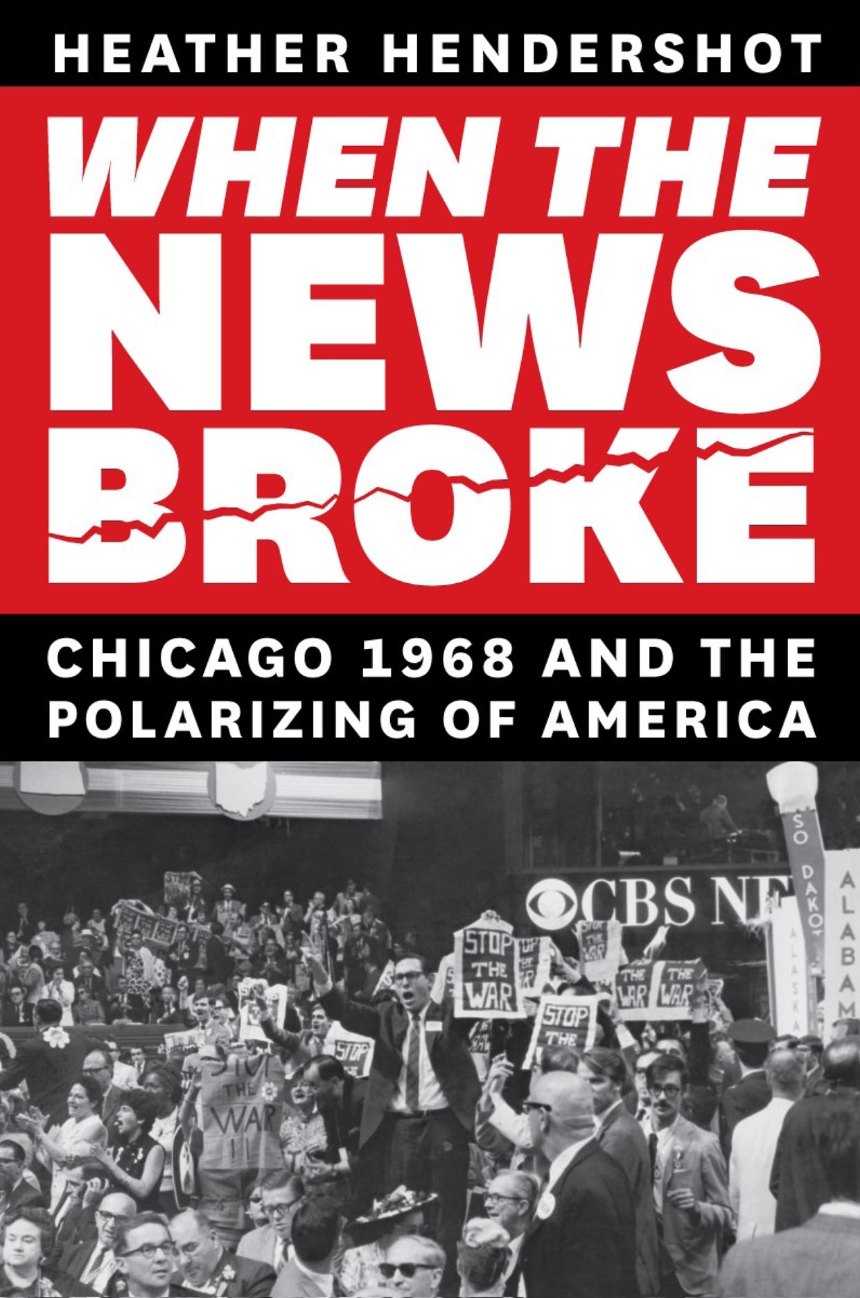Jo Freeman Reviews: When the News Broke: Chicago 1968 and the Polarizing of America

Reviewed by Jo Freeman
When the News Broke: Chicago 1968 and the Polarizing of America
by Heather Hendershot
Chicago: University of Chicago Press,
400 pages with 32 photos
Hardcover: $30. pdf $29.99
In 1968, change was happening all over the world. In the United States mounting opposition to the war in Viet Nam and several burgeoning social movements all demanded attention. People representing many of these came to the 1968 Democratic Convention in Chicago in hopes of reaching the larger public with their message. Author Heather Hendershot writes about the news media – especially the three network TV companies – at the 1968 Democratic Convention in Chicago.
What would the news networks cover?
This book appealed to me because I was outside the convention. What I saw of the inside shenanigans was from a TV screen, when I could find one. Until I read this book I did not know that Mayor Daley, aka King Richard I, had maneuvered the media to minimize TV coverage inside and out.
For roughly three decades three TV networks – CBS, NBC and ABC – competed for audience, ads and acceptance. In addition to entertainment, they provided breaking news every evening, as well as some analysis and occasional commentary. The networks came to Chicago knowing that 1968 was not an ordinary year, but not knowing what to expect.
That’s why the title is a double entendre. Breaking news is what the networks reported. The network system broke in 1968. Coverage of the Democratic Convention in Chicago was denounced by the Democratic Party overlords as biased. Over time, other authorities damned the press less for bias and more for being downright fake. As the US split into red and blue states, it was assumed that the media was not neutral in reporting the news.
As the author points out, the “convention was many things to many people.” She sorts them into four groups. The “realists” wanted things to go off without a hitch (you could also call these the party people). The “idealists” were mostly delegates for the many dissidents within the party who nonetheless wanted the Democrats to succeed, but only with support for their issues. “Outsiders” were mostly members of minority groups, some of whom were delegates, mostly from Southern states. They wanted recognition and inclusion. Then there were the “protestors,” who weren’t just anti-war activists. Indeed the Yippies were the most photogenic; they nominated a pig for president.
Pages: 1 · 2






